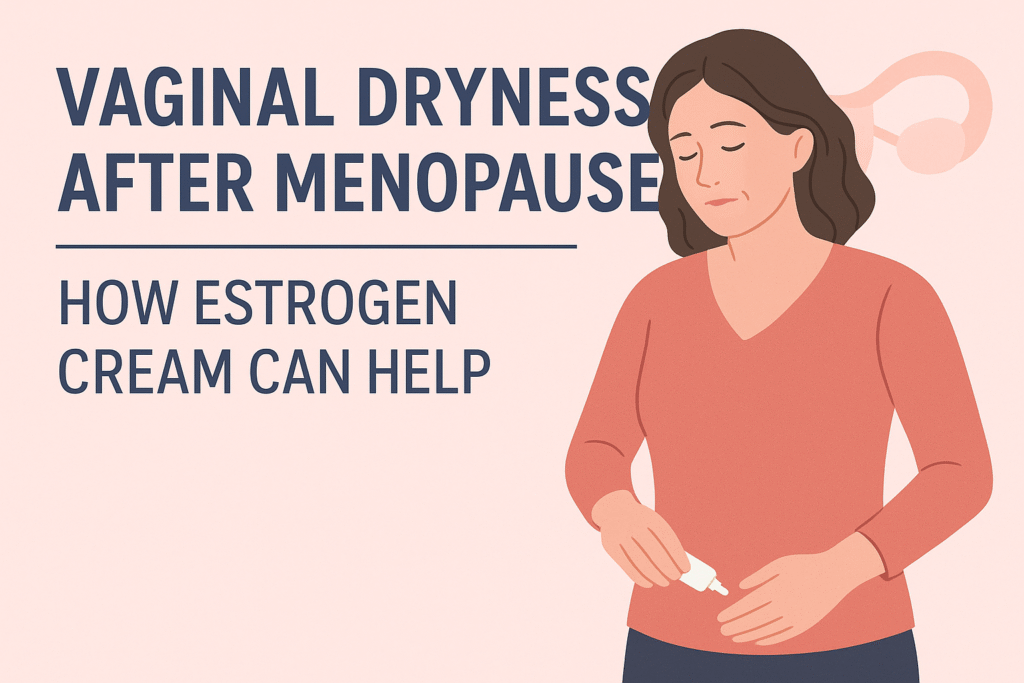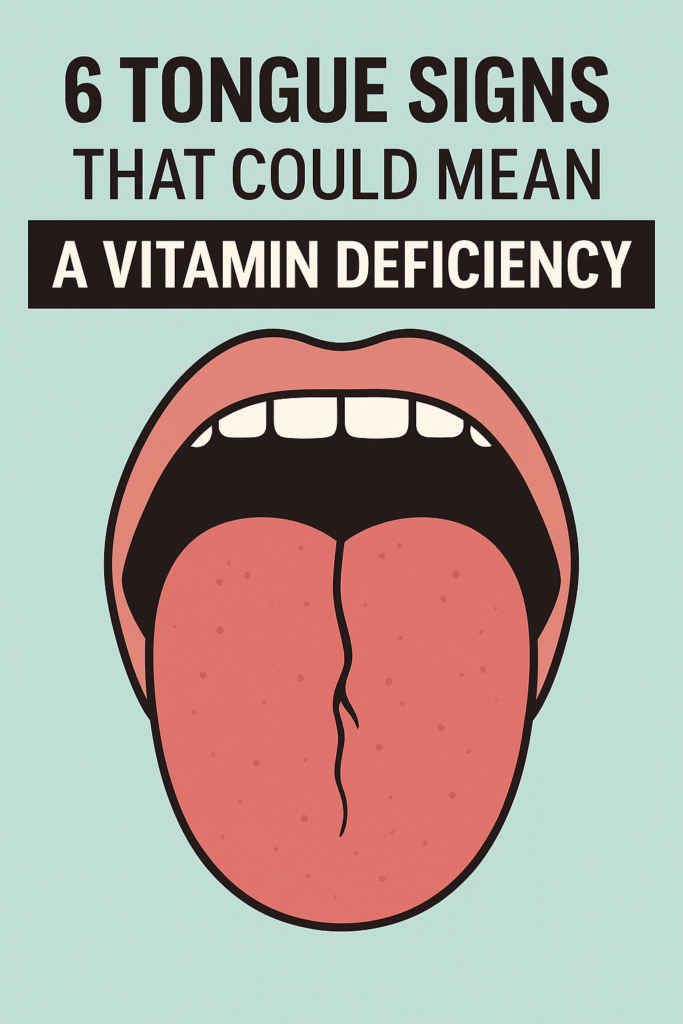
⚠️ Affiliate Disclaimer: This post may contain affiliate links, which means I may earn a small commission — at no extra cost to you — if you make a purchase through one of these links. I only recommend products or services I genuinely trust and believe can provide value. Thank you for supporting My Medical Muse!
How Long Before Estrogen Cream Works: 3 Proven Timelines for Vaginal Dryness Relief
How Long Before Estrogen Cream Works: Resolve Vaginal Dryness After Menopause?
Vaginal dryness is a prevalent and often disruptive symptom experienced by many women during and after menopause. Beyond causing discomfort, it can affect sexual intimacy, daily activities, and overall quality of life. One of the most effective treatments is localized estrogen therapy, commonly administered as vaginal estrogen cream, which directly targets the vaginal tissues to restore moisture and elasticity. A common question among women considering this treatment is, How long does it take for estrogen cream to relieve vaginal dryness after menopause? In this comprehensive guide, we’ll explore how vaginal estrogen cream works, the expected timeline for symptom relief, alternative treatment options, and practical strategies to support long-term vaginal health.
Understanding Vaginal Dryness After Menopause
Why Menopause Causes Vaginal Dryness
Menopause marks the natural end of menstruation and represents a major shift in a woman’s hormonal balance. One of the most significant changes is the decline in estrogen levels, which has a profound effect on vaginal health.
Estrogen is essential for maintaining the structure and function of vaginal tissues. It:
- Maintains vaginal tissue thickness and elasticity: Estrogen keeps the vaginal walls firm, resilient, and able to stretch comfortably.
- Promotes natural lubrication: It stimulates the production of vaginal fluids, keeping the vagina moist and reducing friction during sexual activity.
- Maintains a healthy vaginal environment: Estrogen supports an acidic vaginal environment, which protects against infections and supports the growth of beneficial bacteria.
As women enter menopause, usually around the age of fifty-one, the ovaries gradually produce less estrogen. This hormonal decline leads to several physical changes in the vagina:
- Thinning of the vaginal walls: Vaginal tissues lose thickness and resilience.
- Decreased lubrication: Reduced estrogen causes lower vaginal moisture, leading to dryness.
- Increased susceptibility to infections: A less acidic environment makes the vagina more prone to bacterial infections.
This combination of changes is medically referred to as atrophic vaginitis or genitourinary syndrome of menopause. Women may experience discomfort, itching, irritation, and pain during sexual activity.
Prevalence of Vaginal Dryness
Vaginal dryness is a common issue for women during and after menopause. Research indicates:
- Nearly fifty percent of postmenopausal women report experiencing vaginal dryness, which can interfere with sexual activity and overall comfort.
- A study of over two thousand women in the United Kingdom, aged fifty-five to eighty-five, found that half of the participants reported urogenital symptoms during menopause.
- A pan-European study of three thousand women between the ages of fifty-five and seventy-five reported that thirty percent experienced symptoms of vaginal atrophy, with the majority seeking treatment through hormone therapy.
- Research further indicates that approximately sixty-five percent of women experience symptoms of genitourinary syndrome of menopause within the first year after menopause, and this rises to nearly eighty-five percent six years after menopause.
These statistics highlight that vaginal dryness is not only common but also a significant concern for many women. Understanding why these changes occur is the first step in managing symptoms effectively and improving quality of life after menopause.
Signs and Symptoms to Watch For
Recognizing the early signs of vaginal dryness and atrophic changes is important for timely intervention. Common symptoms include:
- Dryness, burning, or itching in the vaginal area.
- Pain during sexual activity (dyspareunia), which can lead to decreased intimacy
- Light bleeding or spotting after sexual activity.
- Increased susceptibility to urinary tract infections due to thinning vaginal tissue.
- Discomfort with daily activities, such as prolonged sitting or exercise.
Early identification of these symptoms can lead to more effective treatment and a quicker return to comfort and sexual well-being.
Causes of Vaginal Dryness Beyond Estrogen Decline
Although the natural decline of estrogen during menopause is the primary driver of vaginal dryness, several other factors can contribute to or worsen this condition. Recognizing these causes is important for effective management and tailored treatment.
Medications
Certain medications can interfere with the body’s natural ability to maintain vaginal moisture. For example:
- Antidepressants: may reduce sexual arousal and natural lubrication.
- Antihistamines: can cause systemic dryness, including in vaginal tissues.
- Chemotherapy drugs or other hormone-altering medications may affect the vaginal lining, leading to increased dryness and irritation.
Women taking these medications should discuss their symptoms with a healthcare provider, who may suggest alternative treatments or supplemental therapies to relieve dryness.
Chronic Health Conditions
Long-term health conditions can also impact vaginal tissue health. These include:
- Diabetes: High blood sugar levels can impair circulation and contribute to tissue dryness.
- Thyroid disorders: Imbalances in thyroid hormone can affect mucosal tissues, including the vagina.
- Autoimmune conditions: Disorders such as Sjögren’s syndrome, lupus, or other autoimmune diseases may reduce moisture production and compromise tissue integrity.
Managing these underlying health conditions alongside localized treatment can improve outcomes for vaginal dryness.
Lifestyle Factors
Certain habits and lifestyle choices may exacerbate dryness or delay tissue recovery:
- Smoking: Reduces blood flow to vaginal tissues, impairing lubrication and tissue health.
- Excessive alcohol consumption: Can lead to dehydration and impact mucosal tissue quality.
- Low water intake: Adequate hydration is essential for maintaining natural moisture levels.
- Poor nutrition: Diets lacking essential vitamins, minerals, and healthy fats may compromise tissue repair and elasticity.
Incorporating healthier lifestyle habits can complement estrogen therapy and enhance vaginal comfort.
Vaginal Infections or Irritation
Recurrent infections and exposure to irritants can damage vaginal tissues and worsen dryness:
- Urinary tract infections and yeast infections can inflame the vaginal lining and reduce moisture.
- Prolonged use of irritants, such as scented soaps, bubble baths, and douches, can disrupt the natural balance of vaginal flora, aggravate dryness, and increase susceptibility to irritation or infection.
Avoiding unnecessary irritants and promptly treating infections are important steps in maintaining vaginal health.
By understanding these contributing factors, women and healthcare providers can identify the root causes of vaginal dryness and develop a personalized treatment plan. This comprehensive approach not only addresses symptoms but also promotes long-term vaginal health and overall well-being.
What Is Vaginal Estrogen Cream?
Vaginal estrogen cream is a localized hormone therapy designed specifically to target the tissues of the vagina. Unlike systemic hormone therapy, which affects the entire body, vaginal creams work directly where they are needed, providing relief with minimal absorption into the bloodstream.
The main benefits of vaginal estrogen cream include:
- Direct delivery of estrogen to the vaginal walls: This helps restore tissue thickness and elasticity.
- Minimized systemic absorption: Because the hormone acts locally, the effects on the rest of the body are reduced.
- Improved lubrication, elasticity, and comfort: Regular use can reduce dryness, irritation, and pain during sexual activity.
Common Vaginal Estrogen Products
There are several forms of vaginal estrogen therapy, and your healthcare provider will recommend the most suitable option based on your symptoms, medical history, and personal preferences. Some commonly prescribed treatments include:
- Estradiol cream (Estrace): A widely used cream that provides direct estrogen supplementation to the vaginal tissues.
- Premarin cream (conjugated estrogens): Another effective cream for restoring vaginal moisture and elasticity.
- Estring vaginal ring: A flexible ring that releases estrogen continuously into the vaginal walls, offering similar localized benefits as creams.
Your doctor will determine the appropriate type and dose, and will guide you on how to apply it effectively to achieve the best results.
How Vaginal Estrogen Cream Works
Understanding how vaginal estrogen cream works is essential to setting realistic expectations for symptom relief. The effectiveness of the cream depends on how it interacts with the vaginal tissues. The main mechanisms include:
Rehydration of Vaginal Tissues
Estrogen increases blood flow to the vaginal area and stimulates the production of natural moisture. This enhanced lubrication helps restore comfort, reduce friction, and relieve the burning or itching sensations often associated with vaginal dryness.
Restoration of the Vaginal Epithelium
Over time, estrogen encourages the vaginal lining to become thicker, more elastic, and healthier. This restoration of the epithelium reduces irritation, improves tissue resilience, and enhances overall vaginal health.
Balancing Vaginal Acidity
Estrogen helps maintain a slightly acidic vaginal environment, typically with a pH between 3.5 and 4.5. This acidity is crucial for preventing infections, supporting the growth of beneficial bacteria, and maintaining a balanced vaginal microbiome.
How Long Before Vaginal Estrogen Cream Works?
The timeline for improvement varies depending on the severity of dryness, the potency of the cream, and how consistently it is applied. Clinical studies and patient reports provide the following guidance:
Initial Relief
Some women notice improvements in lubrication and comfort within one to two weeks of regular use. These early changes often include reduced burning or itching.
Significant Improvement
Most women experience noticeable relief from vaginal dryness, irritation, and discomfort during sexual activity after four to six weeks of consistent use.
Optimal Effect
Full restoration of the vaginal lining, including tissue thickness and elasticity, can take eight to twelve weeks. At this point, the vaginal tissues are generally healthier, more elastic, and better able to maintain natural moisture.
Factors That Influence Response Time
Several factors can affect how quickly estrogen cream provides relief:
Severity of Vaginal Thinning
Women with more advanced vaginal atrophy or longer-standing dryness may require a longer treatment period before noticing significant improvements.
Type and Strength of Cream
Higher-dose estrogen creams can provide faster symptom relief, but they require careful medical supervision to ensure safe use.
Consistency of Use
Applying the cream daily as prescribed during the initial treatment phase is essential for achieving faster and more effective results.
Overall Health and Lifestyle
Factors such as smoking, chronic illnesses, or medications that influence hormone levels can slow tissue recovery and affect the overall response to treatment.
Detailed Timeline of Vaginal Estrogen Cream Effects
Vaginal estrogen cream works gradually to restore vaginal health, and the timeline for improvement can vary depending on the severity of dryness, the specific product used, and individual factors such as age and overall health. Clinical studies and patient experiences suggest the following general pattern of response:
Week 1-2: Early Relief
During the first one to two weeks of consistent use, many women notice initial improvements in vaginal lubrication and a reduction in mild irritation or burning. Some report that daily activities, such as walking or sitting for extended periods, become more comfortable. Early relief often motivates continued adherence to the treatment regimen, which is essential for achieving full benefits.
Week 4-6: Noticeable Improvement
By the fourth to sixth week, most women experience significant improvement in dryness, a reduction in discomfort during sexual activity, and decreased itching or irritation. At this stage, the vaginal tissue begins to regain some elasticity and resilience, and the mucosal lining starts to thicken. Many women notice that sexual intimacy becomes more comfortable and enjoyable, and overall confidence improves.
Week 8-12: Optimal Effect
Full therapeutic effects are typically achieved within eight to twelve weeks of consistent use. At this point, vaginal tissue thickness and elasticity are largely restored, natural lubrication is more consistent, and the vaginal pH returns to a healthy, slightly acidic range. These changes not only relieve dryness and discomfort but also help reduce the risk of infections and support long-term vaginal health.
Key Considerations for Patients
- Individual responses may vary, and some women may notice improvement sooner or later than the average timeline.
- Consistency is critical; skipping doses or using the cream irregularly can delay results.
- Combining treatment with supportive lifestyle practices such as staying hydrated, engaging in regular sexual activity or pelvic floor exercises, and avoiding irritants can enhance the effectiveness of vaginal estrogen therapy.
By understanding this timeline, women can set realistic expectations, remain patient, and maintain adherence to treatment, ensuring the best possible outcomes for comfort, intimacy, and vaginal health.
How to Use Vaginal Estrogen Cream Effectively
For the best results, it is essential to follow your healthcare provider’s instructions carefully. Vaginal estrogen cream works most effectively when applied consistently and correctly. A typical treatment plan consists of two phases: an initial induction phase and a maintenance phase.
Initial Phase (Induction Phase)
- Frequency: The cream is often applied once daily for two to three weeks.
- Amount: Usually a pea-sized amount is inserted into the vagina using the applicator provided with the medication.
- Goal: The initial phase is designed to quickly restore vaginal moisture and improve epithelial thickness, helping to reduce dryness, itching, and discomfort.
Maintenance Phase
- Frequency: Once noticeable improvement is achieved, the frequency of application is typically reduced to two to three times per week.
- Goal: The maintenance phase helps sustain vaginal health, maintain tissue elasticity, and prevent the recurrence of dryness.
Tips for Effective Application
- Wash hands thoroughly before and after applying the cream.
- Apply at bedtime to minimize leakage and allow the cream to remain in place overnight.
- Avoid combining with other vaginal products unless specifically recommended by your healthcare provider, as this may interfere with the effectiveness of the estrogen therapy.
What to Expect During Treatment
Common Improvements
With regular use of vaginal estrogen cream, most women can expect:
- Reduced vaginal dryness and itching
- Less discomfort during sexual activity
- Improved elasticity and tone of vaginal tissues
- Decreased urinary symptoms, such as urgency or recurrent infections
Possible Side Effects
Vaginal estrogen creams are generally safe, particularly because they are applied locally and result in minimal absorption into the bloodstream. Some women may, however, experience:
- Mild vaginal irritation or burning
- Spotting or light vaginal bleeding
- Breast tenderness, which is rare due to the low systemic absorption of the hormone.
If side effects persist or become bothersome, your healthcare provider can adjust the dose or recommend an alternative form of localized estrogen therapy, such as a vaginal ring or vaginal tablet, to achieve the desired results safely.
Alternative and Complementary Options
For women who cannot use vaginal estrogen creams or who wish to supplement their treatment, several alternative strategies can provide relief and support vaginal health.
Non-Hormonal Lubricants and Moisturizers
Non-hormonal products can help alleviate vaginal dryness temporarily, especially during sexual activity:
- Water-based lubricants: These provide immediate relief and reduce friction during intercourse.
- Vaginal moisturizers: Applied regularly, not just before sexual activity, moisturizers help maintain vaginal hydration.
While these products improve comfort, it is important to note that they do not reverse tissue thinning or restore elasticity in the vaginal walls. They are most effective when used in combination with other therapies.
Lifestyle Adjustments
Certain lifestyle habits can support vaginal health and enhance the effectiveness of treatment:
- Stay hydrated: Adequate fluid intake helps maintain natural tissue moisture.
- Engage in regular sexual activity or pelvic floor exercises: These promote blood flow to the vaginal tissues, which can help maintain tissue tone and elasticity.
- Avoid irritants: Scented soaps, douches, bubble baths, and harsh detergents can worsen dryness and irritation.
Other Local Estrogen Therapies
For women who prefer alternatives to creams, localized estrogen can also be delivered via:
- Vaginal rings (Estring): Flexible rings that provide continuous estrogen delivery for up to three months, reducing the need for daily application.
- Vaginal tablets (Vagifem): Small tablets that release estrogen locally; they can be easier to use for some women and offer similar benefits to creams.
When to Consult a Healthcare Provider
It is important to seek medical advice if any of the following occur:
- Persistent symptoms: Vaginal dryness or discomfort that does not improve after six to eight weeks of consistent treatment.
- Severe pain, bleeding, or unusual discharge: These could indicate underlying health issues that require evaluation.
- Medical history considerations: Women with a history of breast cancer, blood clots, or liver disease should discuss the safety of estrogen therapy with their healthcare provider.
A healthcare professional can tailor therapy to your individual needs, identify underlying conditions, and ensure that any long-term use of estrogen or other treatments is safe and effective.
The Takeaway: Setting Realistic Expectations
Patience is essential when treating vaginal dryness with estrogen therapy. While some women may notice early relief within the first one to two weeks, meaningful improvement in symptoms such as dryness, irritation, and discomfort typically occurs after four to six weeks of consistent use. Full restoration of vaginal tissue thickness, elasticity, and overall health may take up to twelve weeks.
Combining localized estrogen therapy with healthy lifestyle practices such as staying hydrated, engaging in regular sexual activity or pelvic floor exercises, and avoiding irritants can enhance treatment results and help maintain long-term vaginal health.
By understanding what to expect and actively managing symptoms, women can regain comfort, intimacy, and confidence during and after menopause. Regular follow-up with a healthcare provider ensures that therapy remains safe and effective, providing the best outcomes for ongoing vaginal health.
- Supporting Vaginal Health Beyond Estrogen Cream
- In addition to using vaginal estrogen cream, adopting supportive lifestyle habits can further enhance vaginal health and improve comfort.
- Regular Sexual Activity
- Engaging in sexual activity on a regular basis increases blood flow to the vaginal tissues, which helps maintain tissue elasticity, moisture, and overall health. Even non-penetrative sexual activity that stimulates blood flow can be beneficial.
- Pelvic Floor Exercises
- Strengthening the pelvic floor muscles through targeted exercises improves vaginal tone and support. Stronger muscles can enhance comfort, reduce dryness-related discomfort during sexual activity, and support overall pelvic health.
- Healthy Diet
- A nutrient-rich diet can provide mild support for vaginal health. Foods high in phytoestrogens, such as soy, flaxseeds, and legumes, may offer subtle estrogen-like effects. Omega-3 fatty acids, found in fish, walnuts, and chia seeds, help reduce inflammation and support tissue health.
- Avoid Irritants
- Certain products can worsen vaginal dryness and irritation. It is best to avoid scented soaps, bubble baths, douches, and harsh detergents, which can disrupt the natural balance of the vaginal environment and increase discomfort.
- Incorporating these practices alongside localized estrogen therapy can help women maintain long-term vaginal health, enhance comfort, and reduce the likelihood of recurrent dryness.
Summary
Vaginal dryness is a common and often uncomfortable symptom that affects many women during and after menopause. The condition can impact intimacy, daily comfort, and overall quality of life, but the good news is that it is treatable and often reversible with localized estrogen therapy.
Vaginal estrogen creams offer several benefits:
- Rapid relief for many women, helping to reduce dryness, irritation, and discomfort.
- Noticeable improvement within four to six weeks, with increased lubrication and reduced pain during sexual activity.
- Full restoration of vaginal tissues within eight to twelve weeks, improving elasticity, thickness, and overall vaginal health.
Achieving the best results requires consistent use, proper application, and regular follow-up with a healthcare provider to monitor progress and ensure safety.
In addition to estrogen therapy, non-hormonal strategies such as water-based lubricants and vaginal moisturizers can provide extra comfort. Lifestyle adjustments, including staying well-hydrated, engaging in regular sexual activity, performing pelvic floor exercises, maintaining a nutrient-rich diet, and avoiding irritants can further support vaginal health and long-term comfort.
By understanding what to expect and actively managing symptoms, women can regain comfort, enhance intimacy, and restore confidence during postmenopause, leading to a healthier, more fulfilling quality of life.
👩⚕️ Need Personalized Health Advice?
Get expert guidance tailored to your unique health concerns through MuseCare Consult. Our licensed doctors are here to help you understand your symptoms, medications, and lab results—confidentially and affordably.
👉 Book a MuseCare Consult NowRelated Blog Post You Might Like:
- Birth Control Pill and Low Libido: 7 Surprising Facts Every Woman Should Know
- 8 Powerful Reasons Why Am I Getting UTIs All the Time Despite Good Hygiene
- How Common Is Ovulation Pain? 7 Shocking Facts Every Woman Must Know
- 13 Sneaky Signs of Magnesium Deficiency in Women (And How to Fix It Naturally)
- Night Sweats Before Period or Perimenopause? 7 Clear Ways to Tell and Sleep Better
- Preventive Screenings for Women’s Health: 10 Essential Tests to Stay Healthy at Every Age


